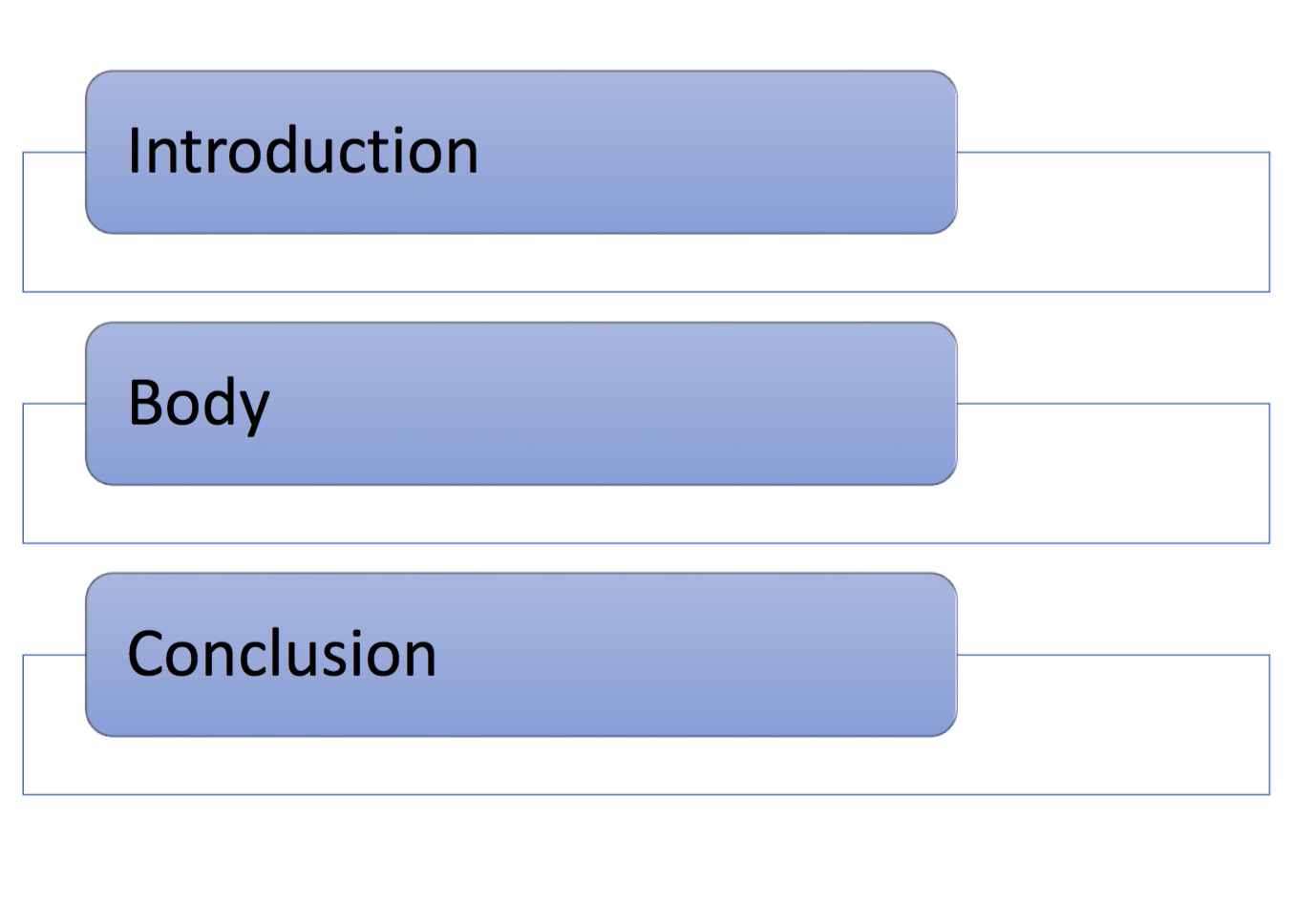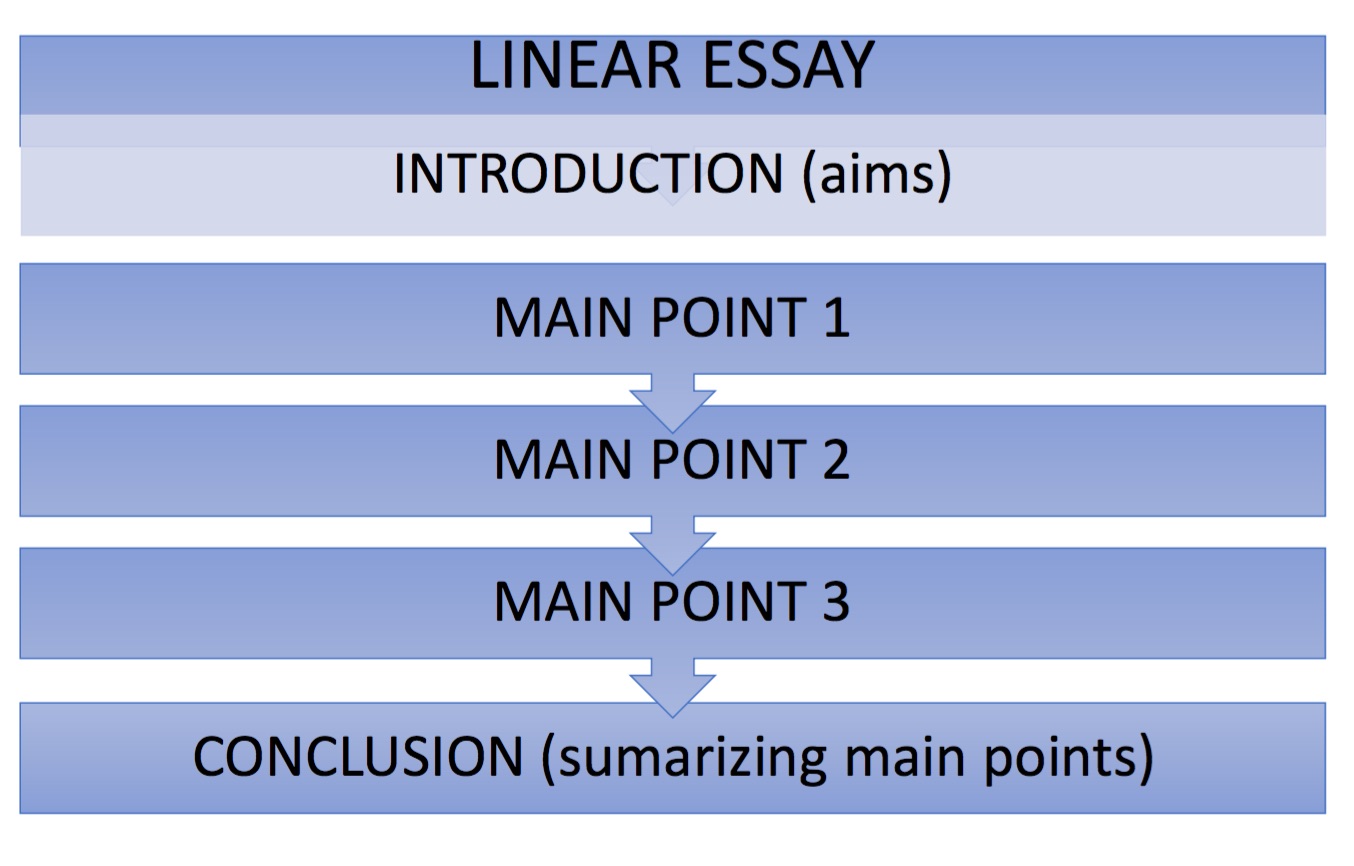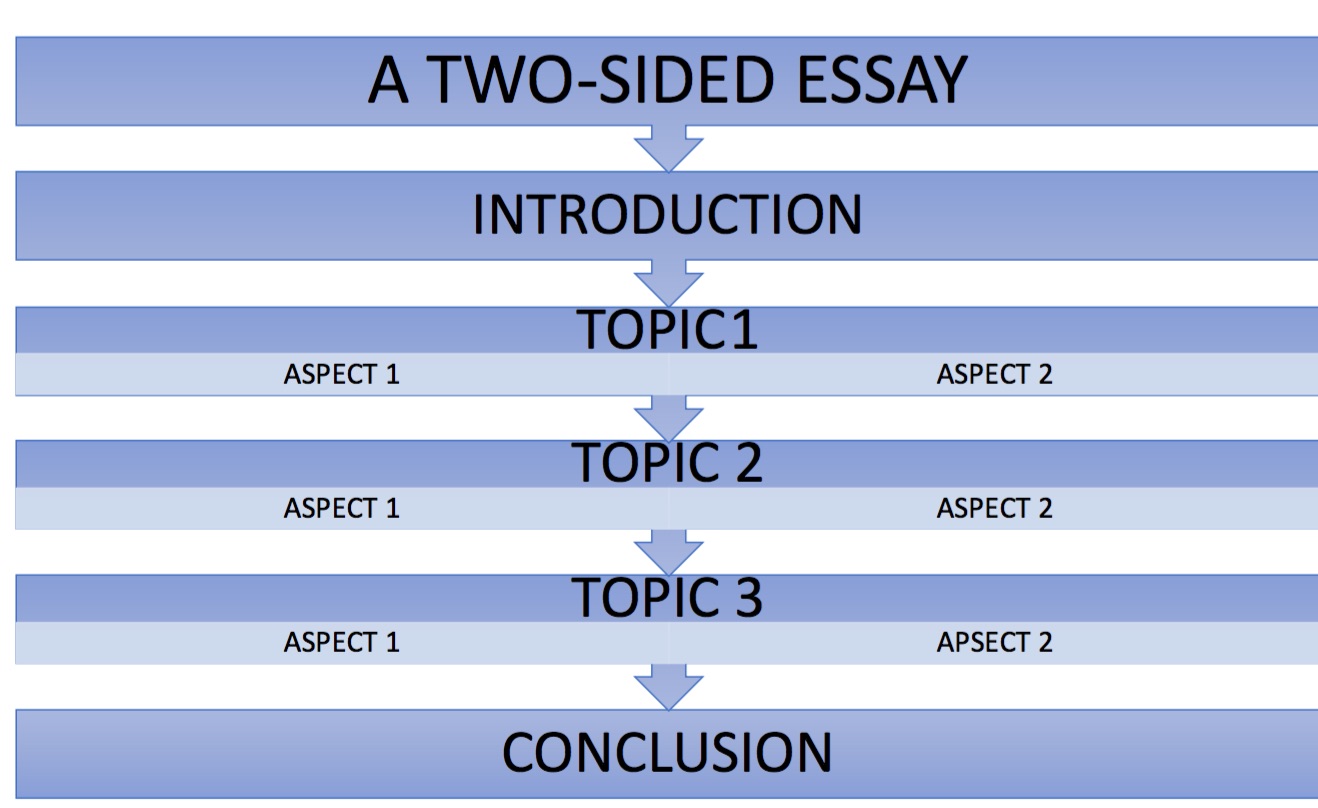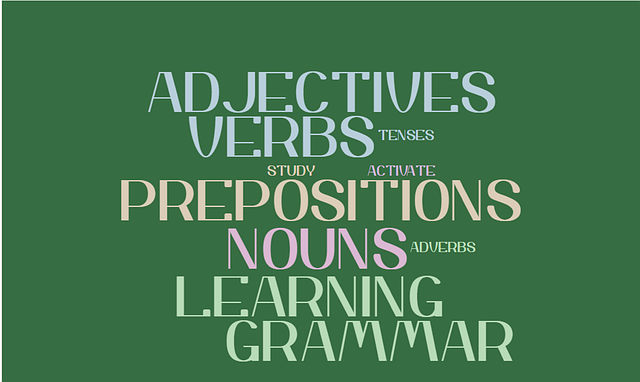Concepts
Structure your writing
Good academic writing is clearly structured. It must have a beginning, middle and an end. In essays, reports, dissertations and presentations, these parts are:

Author's own creation. Academic writing structure. (CC BY-NC-SA)
The introduction to an academic paper always:
- gives the background to the topic.
- outlines the content of the paper - its aims.
- may give a strong relevant quote.
- may define key terms.
The main body of the paper/essay/dissertation is where you do the work. It is where you give your argument, provide your evidence or describe your research and findings, so:
- expand on all the topics mentioned in your introduction.
- bring together all the information you have gathered from other sources during your reading/research.
- develop your argument in a logical structure.
Essay structure:
In an academic essay, you will choose a structure (a flow of connected ideas) based on the type of question you are answering.
These include:
|
Author's own creation. Linear essay. (CC BY-NC-SA) |
Author's own creation. A two-sided essay. (CC BY-NC-SA) |
|
Author's own creation. Argumentative essay. (CC BY-NC-SA) |
Author's own creation. An SPSE essay. (CC BY-NC-SA) |
The conclusion to this kind of papers always:
- summarizes the main points given in the essay.
- draws together the ideas to explain how they connect and relate.
- shows how you have answered the question.
- may also suggest some further research.
- may give a concluding statement.
- may pose a further question.





.jpg)